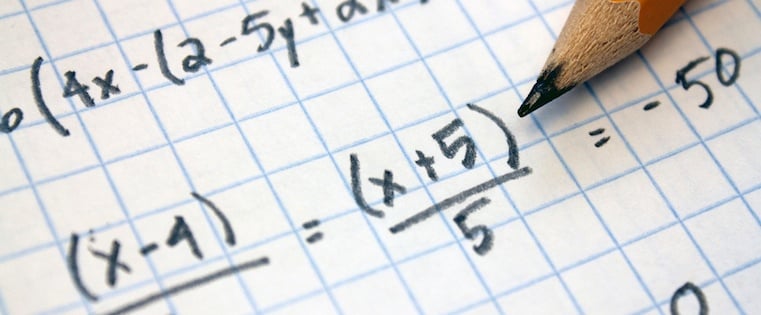
Why did you purchase your last car? Or your last home? Or the shoes you are wearing right now? Or even the coffee you stopped for on the way to work?
In fact, why does anyone buy anything?
It all comes down to one simple motivating factor: The desire to improve one’s life.
Whenever you make a purchase decision -- either in business or in your personal life -- you do so in the hope of creating a better existence.
Your customer is no different. If you are tasked with selling a product or service (and really, who isn’t?) you absolutely must understand the way your customer will make their purchase decision.
I believe that every purchase decision rests on three key factors.
1) Current Dissatisfaction
It starts with Current Dissatisfaction. If life improvement is the goal we can assume that something needs improving; that is, something in the customer’s life is not right. Current Dissatisfaction (CD) encompasses all that needs to be improved: existing pain; glaring need; unhappiness with current product or service provider; disappointment with what they purchased previously; etc.
Suppose, for example, you are selling cars. It doesn't much matter how nice your model is, or how much it costs, or what Consumer Reports says. None of those things matter until there is a CD with your customer’s existing vehicle.
Most salespeople and entrepreneurs focus prematurely on the product; that is, on what the customer is moving to. The strongest professionals focus first on the CD -- what the customer is moving from.
2) Future Promise
With the CD firmly established we can move to the second element: Future Promise. In many ways the Future Promise (FP) is the flipside of the CD. If I know something is currently wrong, I also have some idea of what “right” might look like. That’s the FP.
Future Promise is so much more than features. It is about life improvement. FP is about establishing what Daniel Kahneman refers to as anticipated memories. A strong FP is personal and visionary in nature. It is also customized to each individual prospect.
The FP is at its strongest when the CD is at its highest. Put another way, the greater the CD, the stronger the desire to find the FP in the solution.
3) Cost + Fear
Both the CD and the FP are powerful motivating factors. There are, however, two countering and inhibiting elements that work against a purchase decision. We refer to these factors as Cost and Fear.
Cost and Fear (C+F) are the expected factors that work against a prospect. These elements must be effectively neutralized if the customer is to move forward.
We break these out as separate inhibitors to address the fact that part of the decision is logical and part is emotional. Cost encompasses price, terms, manpower, time, hassle … basically anything that can be even loosely measured. Fear, meanwhile, deals with all things emotional. Between the two elements (cost and fear), the latter is the more formidable challenge.
Understanding The Buying Formula
Collectively, these influencing factors -- both motivating and inhibiting -- work together to guide a prospect to a purchase decision. The relationship of those elements can be expressed in the following formula.
People will purchase when:
Current Dissatisfaction x Future Promise > Cost + Fear or CD x FP > C+F
Every purchase decision you have ever made (and every purchase decision your customer has ever made) can fit into this formula. Test it out on anything you have purchased, large or small, in recent memory.
Applying the Buying Formula
It is helpful to understand a few principles about the buying formula in order to apply the concepts to your own business.
1) The formula is sequential.
As a seller or service provider I need to view the formula from left to right. I must establish CD first and then counter with a compelling FP before I get into a C+F conversation. Put another way, the sooner I talk about C+F, the less likely it is that I will get a sale.
2) The formula is personal.
It will vary dramatically according to each buyer and each product or service.
3) The formula is predictive.
The higher the left side variables (CD and FP) the greater the chance of a sale.
4) The formula is dynamic.
To the customer, the elements in the formula are not stagnant. Each of the elements will shift throughout the sales process.
5) The formula is directive.
I can plan my sales presentation around the formula. After all, if the CD and FP are both sky high, how much work do I need to do on the C+F? Not much.
Test it out. Apply it to the Sausage McMuffin you had for breakfast. Or to the home you purchased last year. Or to the last sale you made.
Most importantly, use it. The formula can help you gain critical understanding in order to best serve your customers so that you can change someone's world.
How People Make Decisions



![The Psychology of Customer Perceived Value [Infographic]](https://53.fs1.hubspotusercontent-na1.net/hubfs/53/380_Customer%20Perceived%20Value.png)


![7 Cognitive Biases Salespeople Must Know to Close Deals [Cheat Sheet]](https://53.fs1.hubspotusercontent-na1.net/hubfs/53/00-Blog_Thinkstock_Images/cognitive-biases-close-more-deals-cheatsheet-514637-edited.jpg)
![20 Weird Cognitive Biases Influencing Your Buyer's Decision [Infographic]](https://53.fs1.hubspotusercontent-na1.net/hubfs/53/biasstockphoto.jpg)